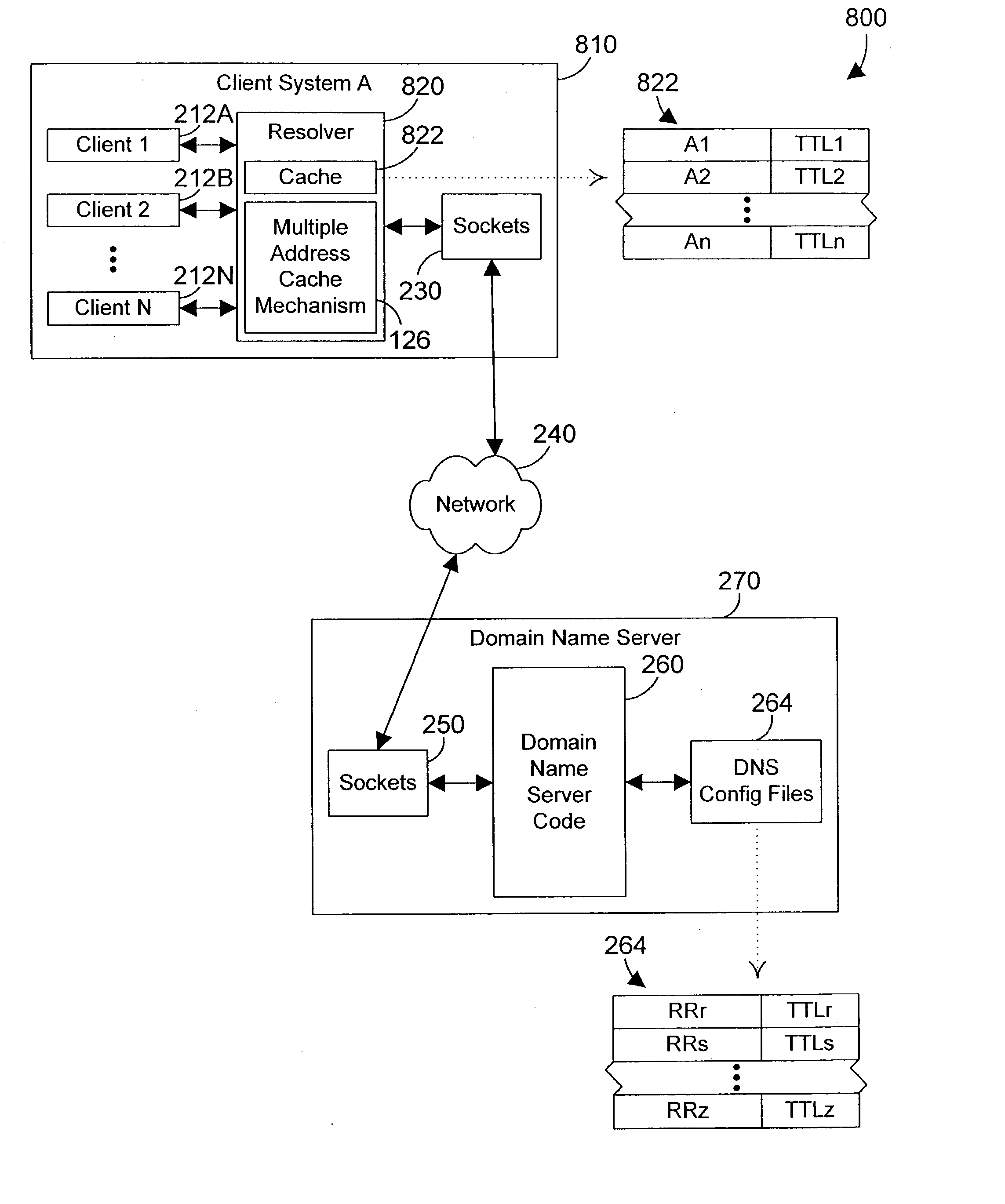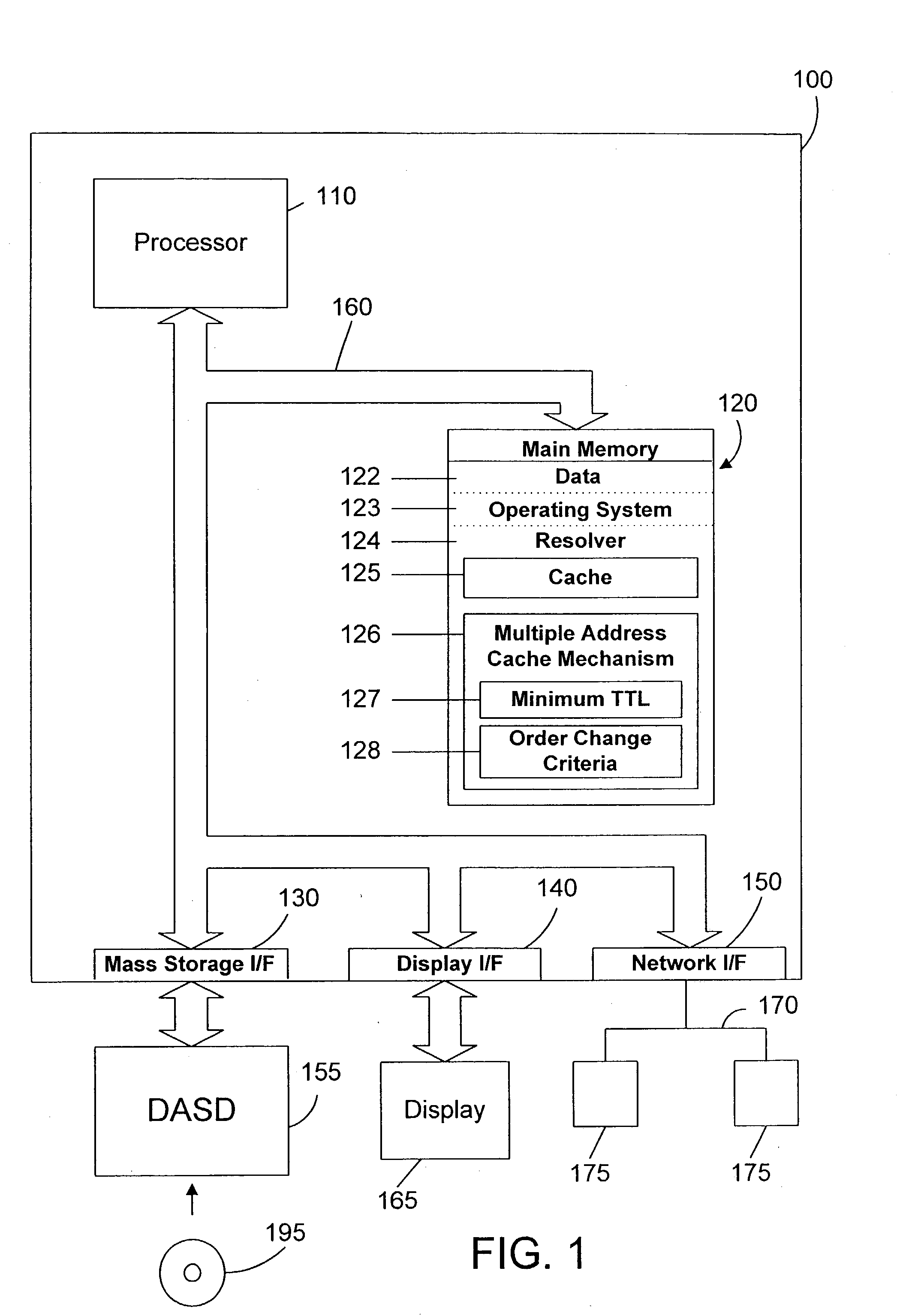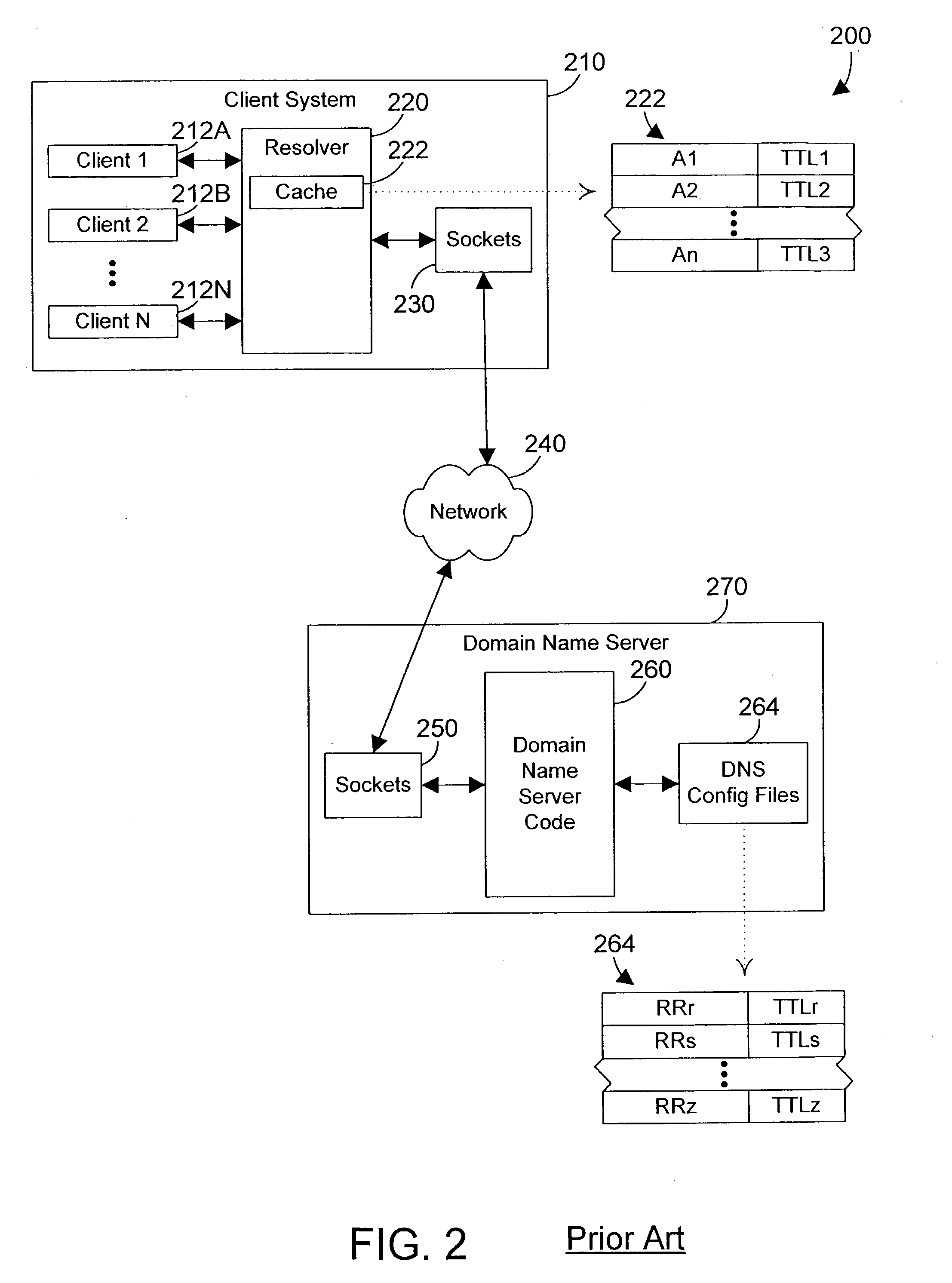Network address cache apparatus and method
- Summary
- Abstract
- Description
- Claims
- Application Information
AI Technical Summary
Benefits of technology
Problems solved by technology
Method used
Image
Examples
Embodiment Construction
[0034] The preferred embodiments enhance the performance of a computer system by increasing a small time to live (TTL) for a cached DNS response to a larger specified minimum while minimizing the negative impact on load balancing by the DNS by changing the order of network addresses returned from the cache. The cache mechanism of the preferred embodiments thus simulates load balancing by changing the order of network addresses, preferably with each query. The result is cached responses that may be used for a much longer period of time because their use over the longer period of time does not significantly affect the load balancing of the DNS.
[0035] Referring now to FIG. 1, a computer system 100 is one suitable implementation of an apparatus in accordance with the preferred embodiments of the invention. Computer system 100 is an IBM iSeries computer system. However, those skilled in the art will appreciate that the mechanisms and apparatus of the present invention apply equally to an...
PUM
 Login to View More
Login to View More Abstract
Description
Claims
Application Information
 Login to View More
Login to View More - R&D
- Intellectual Property
- Life Sciences
- Materials
- Tech Scout
- Unparalleled Data Quality
- Higher Quality Content
- 60% Fewer Hallucinations
Browse by: Latest US Patents, China's latest patents, Technical Efficacy Thesaurus, Application Domain, Technology Topic, Popular Technical Reports.
© 2025 PatSnap. All rights reserved.Legal|Privacy policy|Modern Slavery Act Transparency Statement|Sitemap|About US| Contact US: help@patsnap.com



